Practice Free 300-410 Exam Online Questions
Refer to the exhibit.
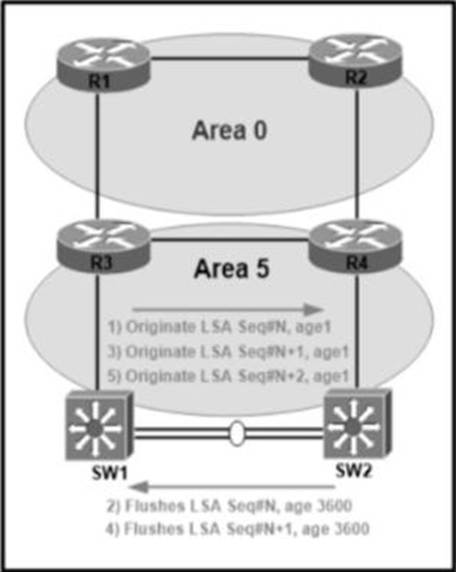
An error message "an OSPF-4-FLOOD_WAR” is received on SW2 from SW1. SW2 is repeatedly receiving its own link-state advertisement and flushes it from the network.
Which action resolves the issue?
- A . Change area 5 to a normal area from a nonstub area
- B . Resolve different subnet mask issue on the link
- C . Configure Layer 3 port channel on interfaces between switches
- D . Resolve duplicate IP address issue in the network
Refer to the exhibit.
A network administrator is troubleshooting OSPF adjacency issue by going through the console logs in the router, but due to an overwhelming log message stream it is impossible to capture the problem.
Which two commands reduce console log messages to relevant OSPF neighbor problem details so that the issue can be resolved? (Choose two)
- A . debug condition interface
- B . debug condition ip
- C . debug condition ospf neighbor
- D . debug condition session-id ADJCHG
- E . debug condition all
Refer to the exhibit.
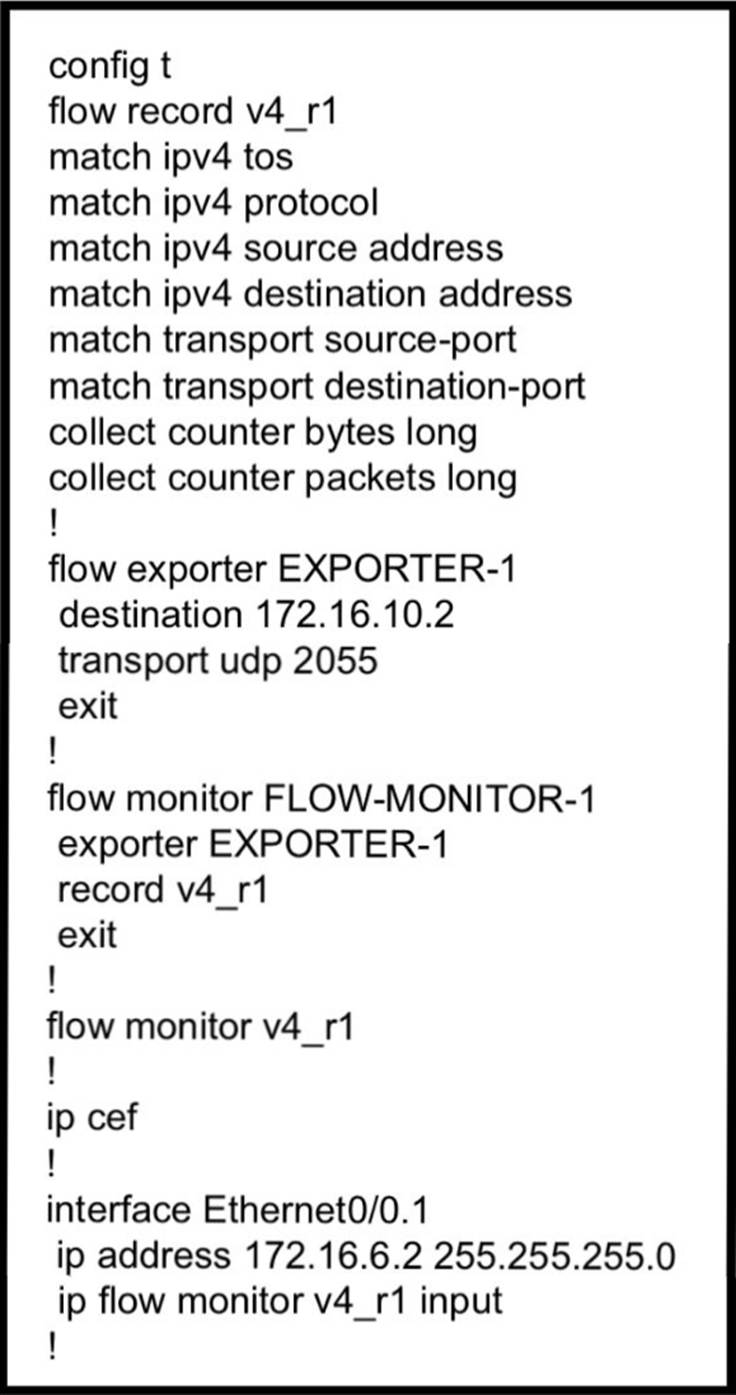
The remote server is failing to receive the NetFlow data.
Which action resolves the issue?
- A . Modify the flow transport command transport udp 2055 to move under flow monitor profile.
- B . Modify the interlace command to Ip flow monitor FLOW-MONITOR-1 Input.
- C . Modify the udp port under flow exporter profile to Ip transport udp 4739.
- D . Modify the flow record command record v4_r1 to move under flow exporter profile.
B
Explanation:
From the exhibit we see there are two flow monitors: the first one “FLOW-MONITOR-1” has been configured correctly but the second one “v4_r1” was left empty and interface E0/0.1 is using it. So the remote server does not receive any NetFlow data.
Refer to the exhibit.
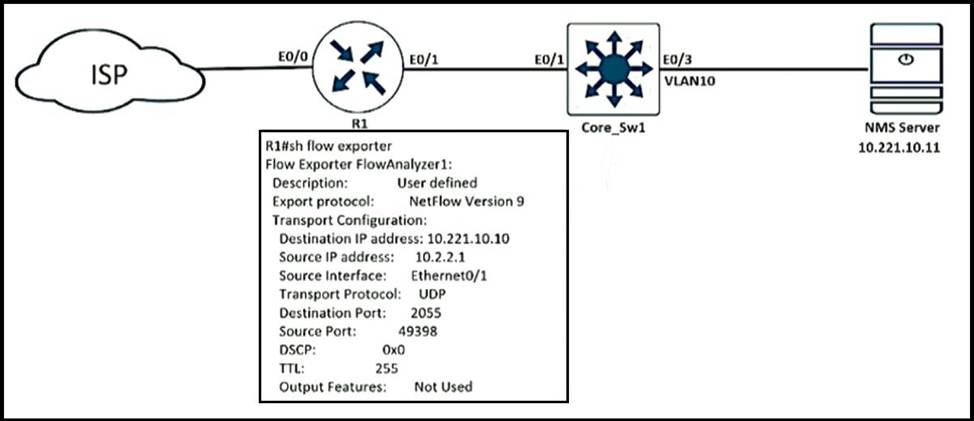
An engineer configured NetFlow on R1, but the NMS server cannot see the flow from R1.
Which configuration resolves the issue?
- A . flow monitor Flowmonitor1destination 10.221.10.11
- B . flow exporter FlowAnalyzer1destination 10.221.10.11
- C . interface Ethernet0/1flow-destination 10.221.10.11
- D . interface Ethernet0/0flow-destination 10.221.10.11
B
Explanation:
From the output we notice that the destination IP address is not correct. The NMS server IP address should be 10.221.10.11, not 10.221.10.10. Therefore we have to change this information under “flow exporter …” configuration.
NetFlow configuration reference: https://www.cisco.com/c/en/us/td/docs/iosxml/ios/fnetflow/configuration/15-mt/fnf-15-mt-book/cfg-de-fnflow-exprts.html
Refer to the exhibit.
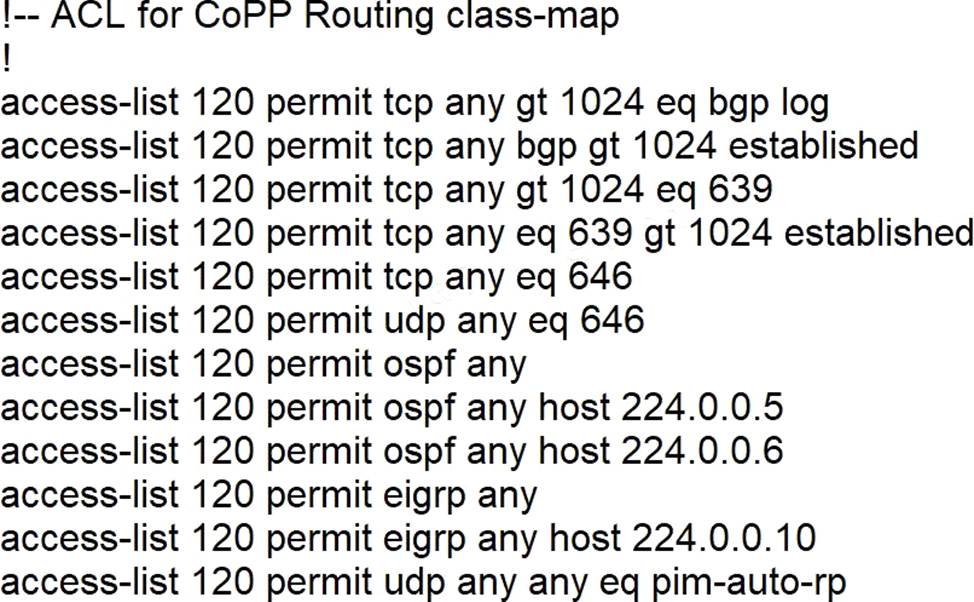
The control plane is heavily impacted after the CoPP configuration is applied to the router.
Which command removal lessens the impact on the control plane?
- A . access-list 120 permit udp any any eq pim-auto-rp
- B . access-list 120 permit eigrp any host 224.0.0.10
- C . access-list 120 permit ospf any
- D . access-list 120 permit tcp any gt 1024 eq bgp log
Refer to the exhibit.
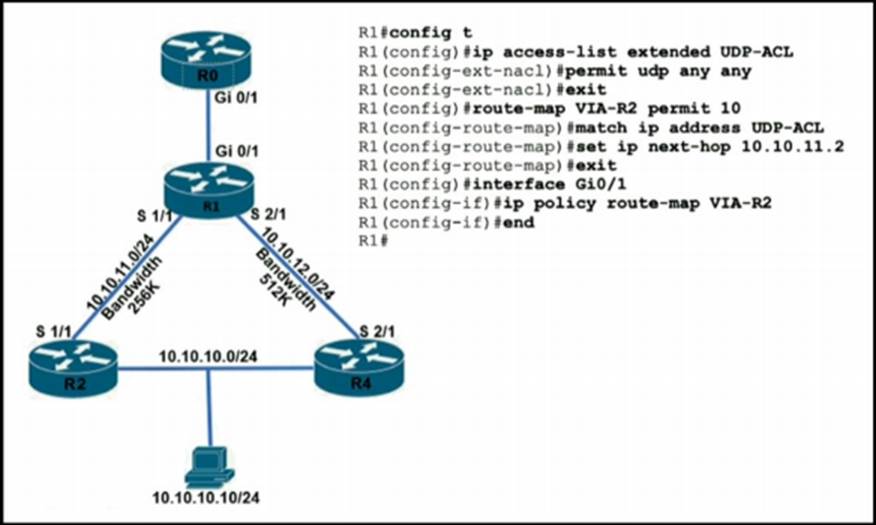
TCP traffic should be reaching host 10.10.10.10/24 via R2.
Which action resolves the issue?
- A . TCP traffic will reach the destination via R2 without any changes
- B . Add a permit 20 statement in the route map to allow TCP traffic
- C . Allow TCP in the access list with no changes to the route map
- D . Set IP next-hop to 10.10.12.2 under the route-map permit 10 to allow TCP traffic.
Refer to the exhibits.


Phase-3 tunnels cannot be established between spoke-to-spoke in DMVPN.
Which two commands are missing? (Choose two.)
- A . The ip nhrp redirect command is missing on the spoke routers.
- B . The ip nhrp shortcut command is missing on the spoke routers.
- C . The ip nhrp redirect commands is missing on the hub router.
- D . The ip nhrp shortcut commands is missing on the hub router.
- E . The ip nhrp map command is missing on the hub router.
What is a function of the IPv6 DHCP Guard feature for DHCP messages?
- A . Only access lists are supported for matching traffic.
- B . All client messages are always switched regardless of the device role.
- C . It blocks only DHCP request messages.
- D . If the device is configured as a DHCP server, no message is switched.
What is the minimum time gap required by the local system before putting a BFD control packet on the wire?
- A . Detect Mult
- B . Required Min Echo RX Interval
- C . Desired Min TX Interval
- D . Required Min RX Interval
C
Explanation:
Desired Min TX Interval: This is the minimum interval, in microseconds, that the local system would like to use when transmitting BFD Control packets, less any jitterapplied. The value zero is reserved.
Required Min Echo RX Interval: This is the minimum interval, in microseconds, between received BFD Echo packets that this system is capable of supporting, less anyjitter applied by the sender. If this value is zero, the transmitting system does not support the receipt of BFD Echo packets.
Reference: https://tools.ietf.org/html/rfc5880
Refer to the exhibit.

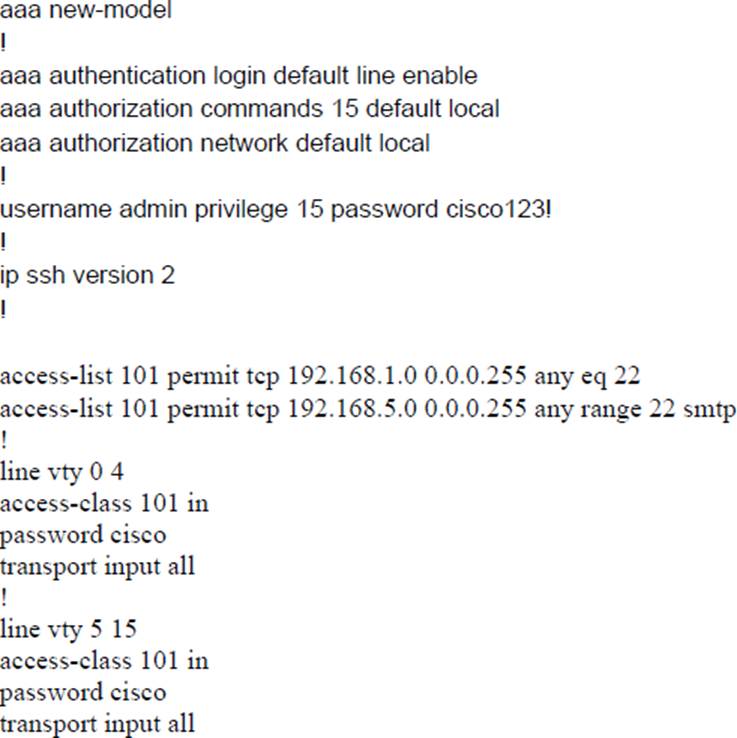
The administrator successfully logs into R1 but cannot access privileged mode commands.
What should be configured to resolve the issue?
- A . aaa authorization reverse-access
- B . secret cisco123! at the end of the username command instead of password cisco123!
- C . matching password on vty lines as cisco123!
- D . enable secret or enable password commands to enter into privileged mode
